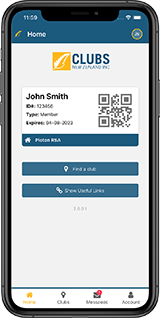Three Phase Approach to Omicron
27 January 2022
On Wednesday the 26th of January the Government set out its three phase plan for dealing with the Omicron Variant. Now that Omicron is in the community there is an expectation that case numbers will surge, so this three phase plan sets out what changes will be introduced to manage the outbreak depending on where we are in the outbreak and the number of cases within the community.
For clarity no significant changes to the Covid-19 Protection Framework settings of Red, Orange and Green have been signalled and the Prime Minister has confirmed that Cabinet is not considering the use of lockdowns in response to Omicron.
Clubs need to be considering what their response will be if a significant portion of the workforce is sick or required to isolate. Overseas figures suggest that at the height of the Omicron outbreak up to 25% of the workforce was unable to work.
Phase One
Phase One is where we are now, and the approach is similar to the approach taken with Delta in that it is a "stamp it out" approach.
Broadly speaking, that includes the same contact tracing, isolation, and request that everyone who is symptomatic be tested at a community testing station or at a primary health provider.
If you are required to isolate, you will receive advice and — if needed — support to do so. At this phase you will need to isolate for 14 days if you are a case, and 10 days if you are contact.
The objective is to keep cases as low as possible for as long as possible to allow people to be boosted and children to be vaccinated without Omicron being widespread.
Phase Two
In Phase Two, the objective is to slow the spread and protect vulnerable communities.
The system will be adjusted to focus much more on identifying those who are at greater risk of severe illness from Omicron — which will be a smaller percentage of cases.
In Phase Two, the isolation period for cases will be reduced to 10 days and contacts to 7 days.
Household contacts will actively be managed by contact tracing services, with close contacts requiring a PCR test on day 5.
A rapid escalation in case numbers and the resulting pressure on resources will also require a shift from identifying all infected individuals to being more targeted to those most at risk and those needed to keep the country going.
Digital technology is used more in this phase. Cases will be notified via text message and be directed to an online self-investigation tool which will focus on high-risk exposures. Information will be provided via email and phone-based interviews will still take place where it’s required. Other forms of support will be available to those who need it.
Phase Two is where we will see more widespread use of the test to return-to-work policy where asymptomatic contacts in critical workforces can return a negative rapid antigen test in order to go to work.
We will continue to manage testing of symptomatic people and Close Contacts with PCR testing but we will be enabling ‘test to return’ for asymptomatic critical workers who are close contacts of cases using rapid antigen tests (RATs). These are people like our healthcare workers and those working in food supply and infrastructure who are key to our response to COVID-19 and also in ensuring New Zealanders can continue to access the services they need.
RATs will be integrated into our testing system at this phase and will work alongside PCR tests.
They will be useful when the laboratories cannot provide PCR results within a useful time frame because of large volumes or because of transport delays.
Phase Three
At Phase Three, when cases are in the thousands, there will be further changes to contact tracing. The definition of contacts will change to household and household like contacts only. This will mean the highest risk contacts will need to isolate.
Supported self-service, rapid antigen testing for diagnosing COVID-19 and a self-service tool to enable identification of high-risk contacts will be significant to respond to the high volumes of Omicron cases.
Digital technologies will continue to be utilised at this phase, and people will be supported to self-notify Close Contacts. There will be continued support for those members of the community who are not digitally enabled.
The majority of people will be supported and be able to self-manage and isolate at home; and clinical care will focus on anyone with high needs.
More information on the response to Omicron can be found on the www.covid19.govt.nz website.



